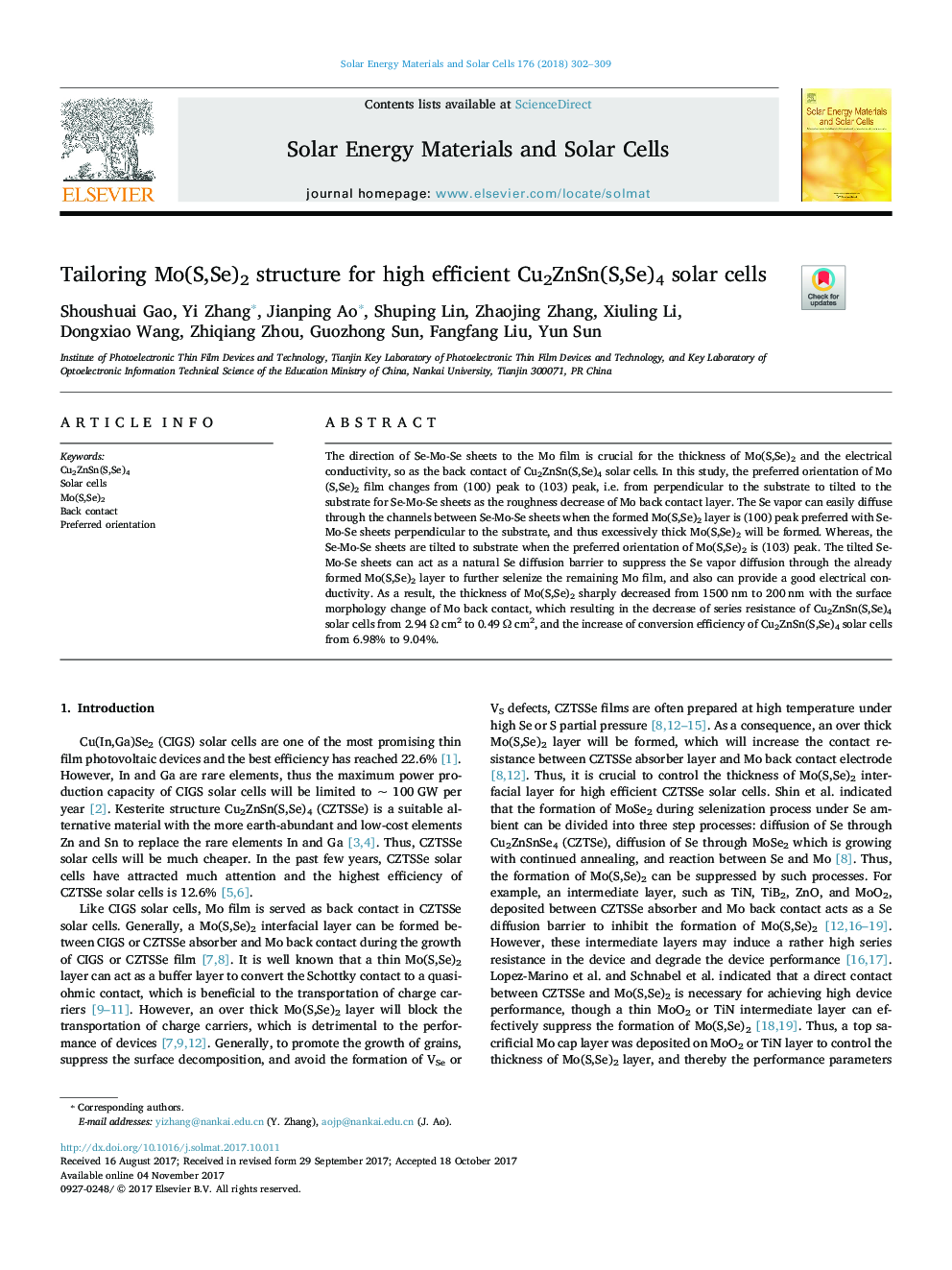| Article ID | Journal | Published Year | Pages | File Type |
|---|---|---|---|---|
| 6534464 | Solar Energy Materials and Solar Cells | 2018 | 8 Pages |
Abstract
The direction of Se-Mo-Se sheets to the Mo film is crucial for the thickness of Mo(S,Se)2 and the electrical conductivity, so as the back contact of Cu2ZnSn(S,Se)4 solar cells. In this study, the preferred orientation of Mo(S,Se)2 film changes from (100) peak to (103) peak, i.e. from perpendicular to the substrate to tilted to the substrate for Se-Mo-Se sheets as the roughness decrease of Mo back contact layer. The Se vapor can easily diffuse through the channels between Se-Mo-Se sheets when the formed Mo(S,Se)2 layer is (100) peak preferred with Se-Mo-Se sheets perpendicular to the substrate, and thus excessively thick Mo(S,Se)2 will be formed. Whereas, the Se-Mo-Se sheets are tilted to substrate when the preferred orientation of Mo(S,Se)2 is (103) peak. The tilted Se-Mo-Se sheets can act as a natural Se diffusion barrier to suppress the Se vapor diffusion through the already formed Mo(S,Se)2 layer to further selenize the remaining Mo film, and also can provide a good electrical conductivity. As a result, the thickness of Mo(S,Se)2 sharply decreased from 1500 nm to 200 nm with the surface morphology change of Mo back contact, which resulting in the decrease of series resistance of Cu2ZnSn(S,Se)4 solar cells from 2.94 Ω cm2 to 0.49 Ω cm2, and the increase of conversion efficiency of Cu2ZnSn(S,Se)4 solar cells from 6.98% to 9.04%.
Related Topics
Physical Sciences and Engineering
Chemical Engineering
Catalysis
Authors
Shoushuai Gao, Yi Zhang, Jianping Ao, Shuping Lin, Zhaojing Zhang, Xiuling Li, Dongxiao Wang, Zhiqiang Zhou, Guozhong Sun, Fangfang Liu, Yun Sun,
